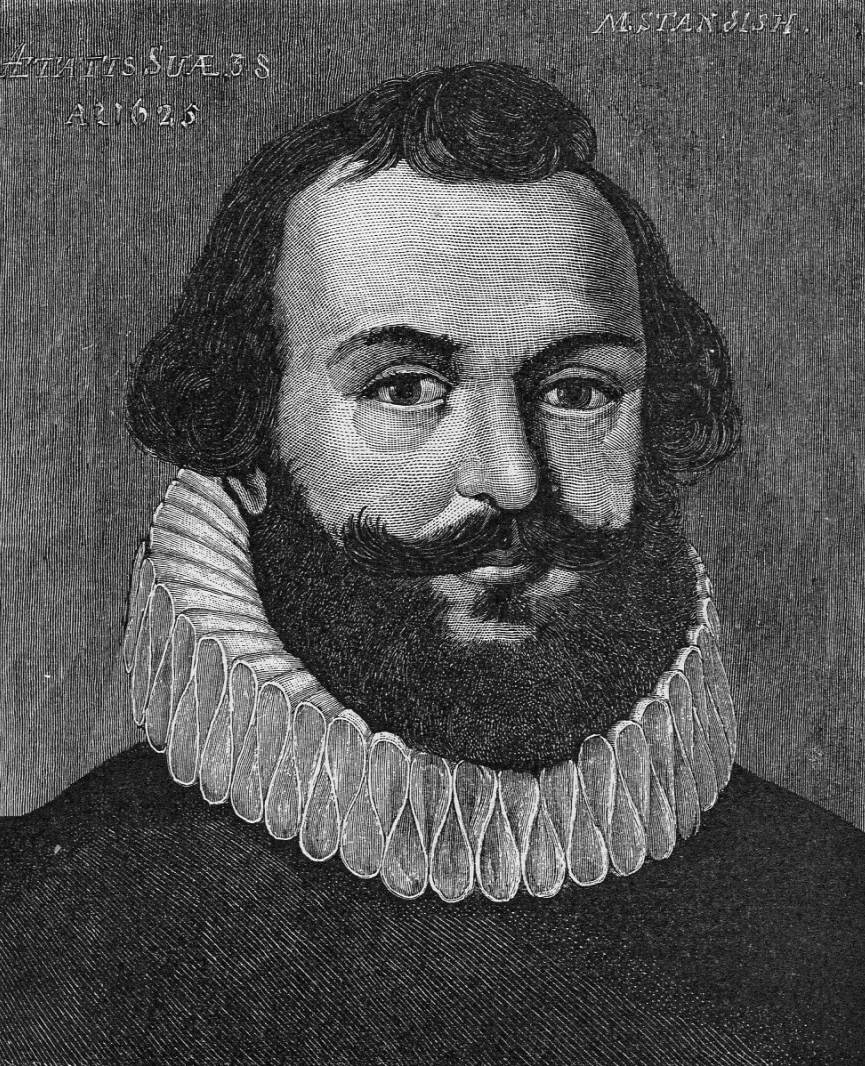 |
The Bruce Tartan;
With the addition of alternating blue 'guards'
representing the shore line of Lake Huron, it was
adopted by Bruce County for Centennial 1967. |
We are now heading into the home stretch of this attempt to make a
prima facie case for John Hayes being the son of Hiram Hayes and Cordelia (perhaps known as Mary) Guinness. Both parents are of Irish decent who were born in Canada. If I am correct, then John Hayes was the grandson of Hierom and Jane Hayes. He is the grand nephew of at least Henry Hayes. He is the brother of William Henry, Hiram Daniel (or, simply, Dan), and Rosa Hayes. He is also the grandson (1812) and great-grandson (1782) of Christopher Guinness of Ireland. He has a whole bunch of aunts and uncles that I am not going to sort out in this series. I am getting a little tired and need to work on other blogs for a while.
We begin by noting that in the 1861 Census for Ontario, there is a Christopher and Eliza Ann Gunnis with family in Grey, Huron, Canada West. Huron and Bruce Counties were variously joined and put asunder according to various criteria of expediency. However, in 1867 Bruce County became completely separate and self governing.* This is the year that Canada became a constitutional confederation. During this period (1866-1870) the Fenian Brotherhood in the United States repeatedly crossed the border to engage in raids against Canadian forts. This was ostensibly to get England to withdraw from Ireland. Additionally, this was another time of speculation in land with the further development of the railway system.
It is very likely that Christopher Gunnis was attracted to the region due to the opportunity to buy government land at a reduced price. This was also true of Bruce County. This process began in earnest in 1856 and there may have been earlier offerings as well. In any case, we find Christopher (49, Ireland) with his wife Eliza (49, Lower Canada, or closer to the mouth of the St. Lawrence River), daughters Eliza (17, Upper Canada, UC), Isabella (16, UC), Sarah J. (9, UC) and sons Nelson (14, UC) Christopher junior (11, UC). Except for the father, who is a Methodist now, the rest of the family are Church of England.
Interestingly, Christopher senior is listed as a laborer. Given his father's position as a captain in Gowan's 9th Provisional Battalion, this seems a bit of a let down. However, this Christopher had been a private in that battalion. Also, of note in the "Residence if outside of limits" column is the abbreviation: Eng. The Ward for this enumeration district is given as "2 from lot 1 to 20 inclusive of Consessions 8, 9, 10, 11 to 12 Gray".
Remember that Hiram (Hirom) and Cordelia Hays (as well as, William Henry and John) are in Brant Township of Bruce County, Canada West at this time. They are Church of England and Hiram is a farmer. What I did not realise the first time that I saw this census was that the next two names were actually with Hiram and Cordelia. This is because the forms are somewhat different than the ones used in the United States. I now recognise both the names and thire significance. Normally these two would be in Grey according to the note on the census; but, Eliza and Isabella Gunnis are visiting their sister and brother-in-law!
By the 1871 Census, all of the Hays family, but for John, have left Brant Township in Bruce County for one reason or another. Christopher Gunniss (60) is there farming with his wife Eliza Ann (60) and their son, Christopher Gunniss (21) who is listed as a servant. There is a daughter Sarah Jane (18) who is married to Alexander Springer (21) who is also listed as a servant. Sarah and Alexander have a four month old daughter, Lydia Ann. And, then, there is John Hays (11). All are Irish and Church of England. The younger ones are all listed as having been born in Ontario now.
Where has the Hays family gone? Well, do you remember all of those times that the census data indicated that they immigrated to the United States in 1866? That is where they have gone. It may be that Hiram could not pay off the final payments for the land that he had bought from the government. The government started getting serious about repayments around this time. And, the banks begin to fail; so, there is not a great deal of extra cash floating around. There were the Fenian troubles and political uncertainty about the future. With the Civil War now over, it made some sense to consider travelling south. But, where? I will try to follow that up in a moment.
The real question is why was John left? Remember, he lists 1872 as his immigration year. Where did he go to? He is in Royal Oak, Oakland, Michigan by 1880 when he marries Charlotte Jarvis and they have their first child, Florence A. Hayes, on 4 November 1880. He may have stayed because his mother was ill and she eventually died. This may be the case as Hiram is married to a Mary in 1880. Or, he may have been left because he had not been well, or he stayed as a pledge for monies lent. That money may have never arrived and the Hays farm may have been taken over by the senior Guinness.
There is a family record on
Ancestry that suggests Christopher Gunnis died in Liberty Center, Ohio in 1871. That same record suggests that Eliza Ann Gunnis died in England in 1871 (remember the Census note about Eng.?) These are both possible. We have other family members traveling back and forth between the United States and England a little later in time. I will need to follow up these leads later.
But, there is one lead that I would like to follow up in conclusion to this series. With all the other information in this series, I believe that this conclusively ties John Hayes to the Hays/Gunnis family. It may not get me back to Hierom and Jane Hayes (I think that is pretty strong too), but it does the trick for me in terms of clearing up a great mystery that has kept us baffled for decades.
I have not found Hiram and Cordelia Hayes in the 1870 census data for Michigan or Ohio. However, in the 1870 Census for Akron, Tuscola, Michigan, there is a William A. Hayes (18) listed as a farm laborer from Canada. The age is not quite right. However, if you were a young man looking for work, you might just inflate your age if you were big and good at working. The A is not too much of a difficulty. Just say William H. Hayes and William A. Hayes quickly. Besides, we know that the William A. Hayes in the in the 1880 Census really is our William Henry Hayes. Also, Akron is on the way to Crawford County as the crow wobbles slightly in flight.
Oh, that reminds me. I have got to reveal that last bits of evidence. Remember William marrying Ellen Ford in Crawford? Don't forget that he has remarried by 1900. I found Ellen P. Ford in the 1900 Census in Grayling, Crawford, Michigan. She is now 50 and working as a servant. She is divorced and it is noted that she had had a number of children. These must have been from a previous marriage. A little more work and I found the actual wedding register.
I
knew that it had to exist because I have found similar data from
Crawford and Wexford and there had to be some source to the Dibean
Marriage Index.
And, what do we find in the register? While the license was obtained on 31 August 1889, the marriage took place on 6 September 1889 in Frederick, Crawford, Michigan. The Reverend William Putnam officiated. Both William Hayes (32) and Ellen Ford (40) reside in Maple Forest. He was born in Canada and she was born in England. He is a farmer and she a housekeeper. The witnesses both live in Maple Forest. He lists his parents; she does not.
 |
Girls, do I really
need a caption here? |
Who are the parents of William Hayes?
Hiram Hayes and
Cordelia Genius [
sic] [If you switch the vowels around you get Guines!]. One of the witnesses is William Ford. Is he Ellen's son? Who is the other witness?
Mrs Lottie Hayes, John's wife!
There is one more link to finalize. And, yet again, it will be done via a marriage registration. This time it will be the registration of at least the third marriage of the father of William, John, Rosa and Hiram Daniel.
On December 29, 1894, Hiram marries Francis Green. She is fifty and does not give her parents names. Hiram declares himself to be fifty as well. However, we know that he is sixty! She must have found out soon enough. Hiram has a new wife by 1899. Hiram, who is a farmer who was born in Canada, is living in Maple Forest and the wedding takes place in Twin Lakes. No family members are witnesses. Who are his parents? Hiram Hayes and Jane Fullerton!
And, there you have it! Here is the documentary evidence of the link between the families. I think that a
prima facie case has been made. John Hayes is the son of Hiram and Cordelia Hayes
nee Guinness. He is the grandson of Christopher Guinness, Junior and great-grandson of Christopher Guinness, Senior. They are of Irish descent and Church of England affiliation. John Hayes is also the grandson of Hierom (Jerome) and Jane Hayes. They too are Irish and affiliated with the Church of England.
QED.
It's time for my reward! I'm off for some stout! Cheers!
Oh, and a special thanks to
San Antonio...you girls know what I mean.
*
Click on this link for an excellent history of Bruce County.
Attribution of Image:
Tartan By Celtus (Own work) [CC-BY-SA-2.5], via Wikimedia Commons
Stout By Guinness, Pic By Sami Keinänen (www.flickr.com) [CC-BY-SA-2.0], via Wikimedia Commons







